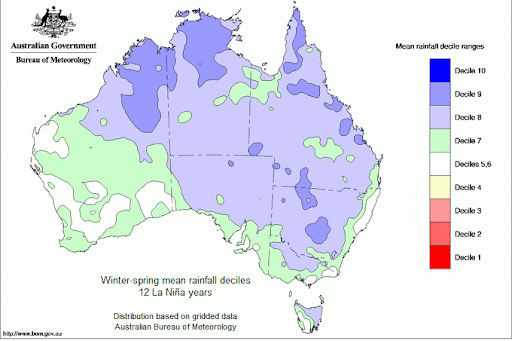General News
17 October, 2020
BOM releases severe weather outlook for Far North.
The Bureau of Meteorology has released its severe weather outlook for October to April.

The Bureau of Meteorology (BOM) has released its Severe Weather Outlook for October to April, showing an increased risk of flooding for eastern Australia and tropical cyclones in the north, with roughly average potential for heatwaves and severe thunderstorms.
The current La Niña is likely to bring more rain to eastern and northern Australia, with some drought-affected areas already seeing rainfall deficiencies ease and water storage levels increase.
BOM data also suggests an earlier than normal arrival for the first rains of this year's northern wet season.
While recent decades have seen a decline in the number of tropical cyclones in our region, Bureau climatologist, Greg Browning, says this summer is likely to buck that trend.
"On average Australia sees 9 to 11 tropical cyclones each year, with 4 crossing the coast. With La Niña this year we are expecting to see slightly more tropical cyclones than average, and the first one may arrive earlier than normal," Mr Browning said.
"Every northern wet season has had at least one tropical cyclone cross the Australian coast, so we can never be complacent. We know that cyclones can develop at any time throughout the tropical cyclone season, which runs from November to April.
"This means that communities right across northern Australia need to stay be prepared now, and stay informed from the very start of the tropical cyclone season in October, right though until April."
The Bureau has also released it’s fire outlook for the next 6 months. Mt Browning said after the catastrophic fires of last summer, it's a very different bushfire outlook this season, with average fire potential for most parts.
"This fire season we're expecting wetter than average conditions in eastern and northern Australia, so long-running large bushfires are less likely, however a wetter spring can lead to abundant grass growth, which could increase fire danger as it naturally dries during summer." he said.
The Bureau's General Manager of Decision Support Services, Sandy Whight, said the lower fire risk across much of Australia is no reason for complacency.
"It's important to remember that, right across Australia, even short periods of hot and windy weather will raise the fire risk, so communities need to have their bushfire plans ready.
"La Niña also brings more rain and increased humidity, which can mean fewer extreme heat days. But while heatwaves may not be as severe, in southern areas they may last longer and be more humid – both of which can increase the risk to human health.”


